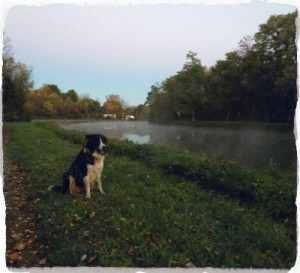Thinking Big on the Erie Canal
 Have we lost our ability to swing for the fence?
Have we lost our ability to swing for the fence?
With the news this week filled once again with the US government partisan bickering, gaming, gerrymandering and small thinking I’m wondering if we’ve lost our ability to think big? Are we still willing to do big things? Are we willing to do things that will change the world? Are we willing to do things that will stand the test of time? Are we willing to do these things in direct opposition to the naysayers and haters that stand ready and armed with all the reasons we shouldn’t?
A defining characteristic of the human race is the penchant for imagining a bigger, brighter future in the face of all evidence to the contrary. Our first ancestors who stepped out of Africa were thinking big. They were stepping out of the known into the unknowable.
This current culture of negative thinking and retrenchment – ‘small thinking’ struck me as I visited one of my kids at their college for homecoming. What message are we sending? What legacy are we leaving? I want my kids to approach the world with an attitude of abundance, not scarcity. I want them to be unafraid to think big. I want them to loath the small thinkers.
Early Saturday morning I rose in a strange hotel room near the university to go for my morning run, as is my habit. My wife and I had brought the dog with us and I roused him to go with me. I didn’t know where I was and figured we’d just point our toes in one direction for 30 minutes then turn around and come back.
In the early morning mist, before the sun had made its appearance in Western New York, we started to jog down the road away from the Hotel, my dog and I. In less than a ½ a kilometer we came to a bridge and there was a foot path entering from the side. I turned to read the sign and was astonished to find myself on the Erie Canal.
I turned, with my dog in tow, down onto the old tow path and began a wonderful perambulation of the famous artifact of an earlier time when people, at least some people, thought big.
There was a time when these people thought big, when they played a big game. The Erie Canal was dug between 1817 and 1825. When finished it spanned 363 miles from NYC on the Atlantic Ocean to Buffalo, NY on the Great Lakes. It solved the problem of overland travel to ‘the west’ without portage. It made Buffalo and NYC into thriving ports and big cities. It opened markets to the grain producers of the Ohio River valley.
These people took a positive leap of faith. They knew nothing about digging canals. They had no technology other than oxen. There was no skilled labor, neither engineers nor craftsman with any experience in this sort of thing. All they had was a big idea and the passion to start. Then they began digging and figured the rest out as they went.
These men studied the precedents in Europe. Canals in Britain, Holland and Denmark. They imported labor, both skilled and not.
Mostly they learned as they went. They created the new technology that was needed to pull a forest full of stumps and to blast through escarpments. Over barriers and rivers they built aqueducts that still stand today. Up the Niagara escarpment they built a series of locks that enabled a loss in elevation never before attempted on a canal.
Their project was not without challenges. They had to sell the concept to a disbelieving government. They had to suffer the abuse of a yellow press that parodied the project as a money wasting ditch.
At one point in an attempt to dig through a swampy section 1,000 laborers died from Malaria. These leaders did not give up. They waited until the swamp froze over and kept building.
The process of building created a skilled engineering and labor pool of stone masons, surveyors and engineers that enabled uncounted spinoff projects and growth of new big ideas.
These leaders stuck with it and created an engineering marvel that built the city and state of New York. With oxen and shovels and carts they built this commercial waterway between the Appalachians and the Adirondacks. They had a vision and executed it with a passion.
As I ran with my dog on the abandoned tow path, all alone in the quiet dawn, I ran by now derelict bridges and aqueducts. The big idea that was the Erie Canal flourished briefly and was displaced by the next big idea – the steam engine and the cross country railroad.
Do we have what those businessmen and entrepreneurs had? Are we capable of thinking big? Or are we cursed with leaders so pedestrian and small that we can’t even agree on little things?
The canals were displaced by the steam engine and the locomotive train. The trains were replaced by highways and trucks. But along the way somewhere I hope, for my kids’ sake, the willpower to do big things was not replaced by something small.
Thoughts?
Chris,

Chris if you liked the canal run, Rochester runs its fall marathon and half marathon on the north side path along the canal.